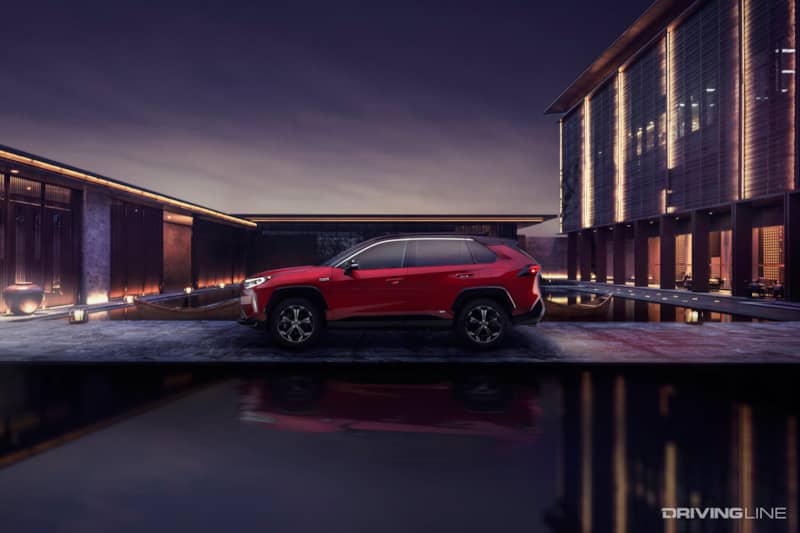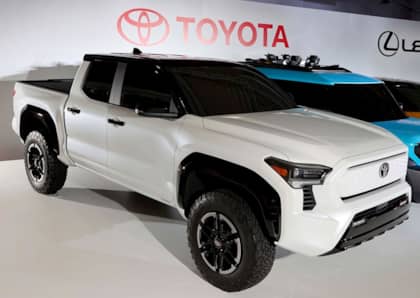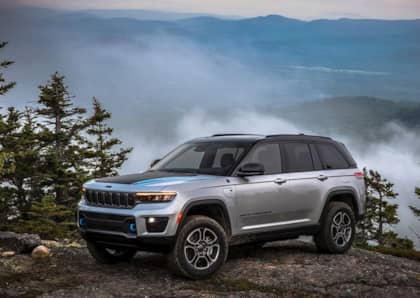Gas Engines & Electric Motors as Partners: The Plug-In-Hybrid is the Overlooked Ideal of the Auto Industry
You can’t go anywhere these days without hearing about another electric vehicle release, an established automaker committing to move away from gasoline engines completely, or a new startup company trying to enter the growing field of EV-only automakers.
But one of the biggest issues facing car buyers and the industry in general, is whether we are truly ready for a world where nearly all vehicles are powered by electric batteries.
Are We Actually Ready for an All-Electric Auto Industry?
There are any number of obstacles that’ll need to be overcome if EVs are to become the primary vehicles on the road, and these have been widely covered by industry analysts. The actual timeline for widespread EV adoption (or even whether it’ll actually happen at all) is still anyone’s guess.

But for all the equal part idealism and skepticism that surrounds the electric vehicle debate, there’s an alternative that has many of the benefits of an EV without any of the major drawbacks.

And that alternative would be the plug-in-hybrid. Despite varying attempts by the world’s automakers, the PHEV has never caught on as the perfect midpoint between electric and internal combustion power.
The Solution is Already Here
In case you needed a refresher—plug in-hybrids or PHEVs, have both gasoline engines and electric motors with batteries that can be plugged in to charge. You can use gasoline, electric power or a combination of both.

How much you can drive on electric power will depend on battery size and other factors, but there are several PHEVs on the market today that can drive for 40+ miles before their batteries need to be charged.
And after you’ve gone that 40 + miles, they simply become normal hybrid vehicles, able to travel for hundreds more miles on gasoline power and able to fill up at any gas station in a matter of minutes.

Everyone’s driving habits are different, but the majority of plug-in hybrid owners find themselves doing the vast majority of their driving under electric power.
The electric range is usually more than enough to get through a day’s commute along with other errands, and then you simply plug it in at home overnight to recharge for the next day.

And then if you want to go for a long road trip or your duties take you beyond the battery range, you can simply drive it as any other gasoline car, one that also happens to get excellent fuel economy thanks to a hybrid system that assists even when the plug-in charge is depleted.
EV Benefits with Few Obstacles
With a PHEV there’s little stress or range anxiety. There’s no trying to scout out charging locations on a cross country trip or fighting for a spot at a public charger in the city just so you have enough juice to get home.
And as an added bonus you generally get to use each form of power when it’s most efficient. Electric power during stop-and-go in the city where power can regenerate from frequent braking, and gasoline power for highway stretches where an EV doesn’t get the chance to regen.

Are there drawbacks to a PHEV over a gasoline car or full electric?
The most common criticism is that they use more parts and have more complicated drivetrains, along with the fact they carry around both gasoline engines and heavy batteries when you are often only using one of the two. But given the versatility they provide, most owners would agree those are small costs to pay. And speaking of costs, while its true that PHEVs are priced higher than their gasoline-only counterparts, tax credits and incentives have often made them cheaper overall, both to purchase and operate.

One of the biggest barriers with PHEVs is that it’s hard to explain to many potential buyers how they work. They aren’t gasoline cars. They aren’t electric cars. They are both—but you don’t need to use both power sources at the same time to operate them, and that can be confusing.
A Proven Commodity
Plug-in hybrids are nothing new. They’ve been around for over a decade now, and one of the most groundbreaking examples was the Chevrolet Volt—which despite being widely praised for its high tech powertrain but wasn’t popular enough to make it into the 2020s. The Volt’s failure was likely less because of its technology and more because GM decided to only put this groundbreaking drivetrain in a small hatchback bodystyle that’s fallen out of favor with American buyers.

Other plug-in hybrid models have enjoyed more success. PHEV crossovers like the Toyota RAV4 Prime and Mitsubishi Outlander have become popular choices in the red hot CUV segment, and Hyundai and Kia are currently rolling out a number of very competitive crossovers that can operate on both electric gas and power.

Then there’s the Stellantis brands, which not only offers a plug-in Jeep Wrangler 4xE with incredible off-road performance, but a Jeep Grand Cherokee 4xE SUV as well. They also offer a Chrysler Pacifica minivan, which despite its massive carrying capacity can still do around 30 miles of gasoline-free driving on a charge.

In other words, there’s still plenty of potential there for this niche to grow larger, even as PHEVs sit on the sidelines of the on-going debate between gasoline and electric vehicles.
It's All Shades of Gray
Perhaps the biggest reason PHEVs haven’t dominated the conversation is because we like to see things in black or white, and plug-in-hybrids by their very nature sit in a gray area between technology, regulations and and consumer demand.

If the issue of environmental protection was as urgent as they say it is, one would think a massive focus on PHEVs would be the way to go. No, they may not be 100% emissions-free, but they would cut down on emissions in a massive way.
And this could all happen right now, without car buyers needing to alter their driving habits or waiting for a massive increase in charging infrastructure that’s yet to happen.

Many people call the plug-in-hybrid a transitional choice or a stopgap until everyone goes full electric, but they may just be the most effective way to bring American motoring into a new era without leaving behind the freedom and familiarity that drivers have grown comfortable with for over a century.
More From Driving Line
- What about the Diesel vs EV debate? We've got the issue covered here.











